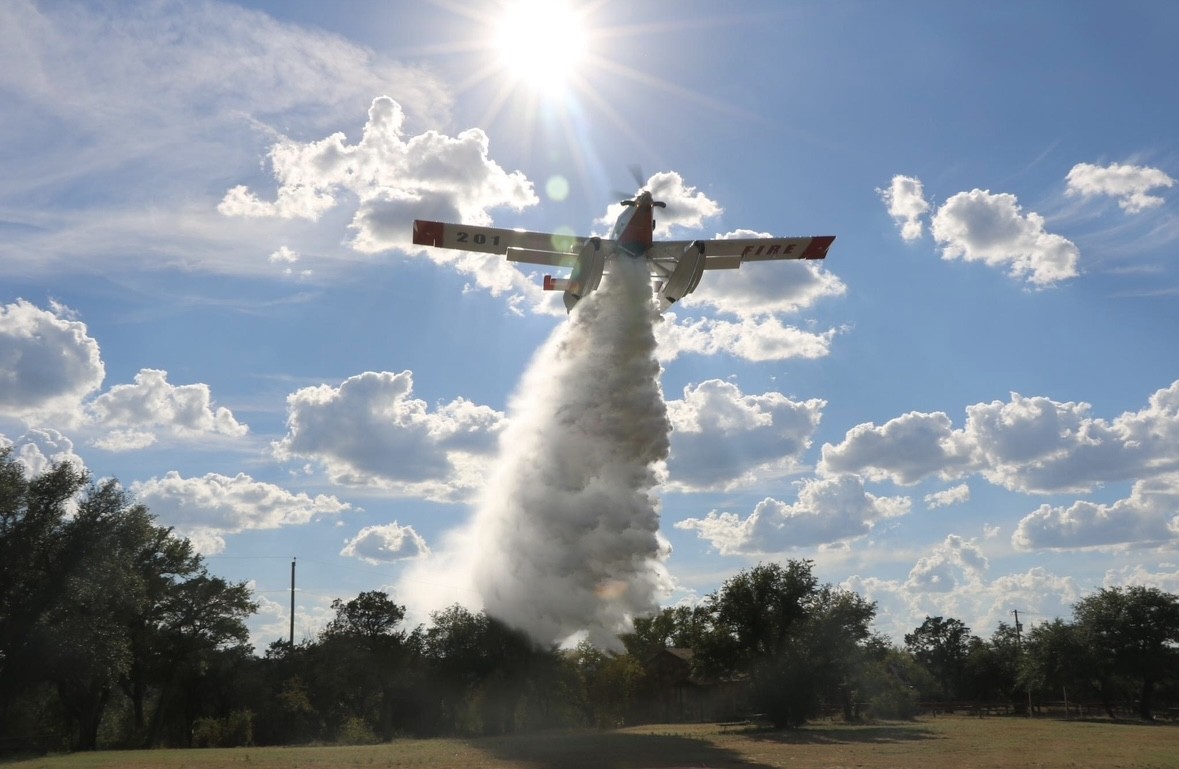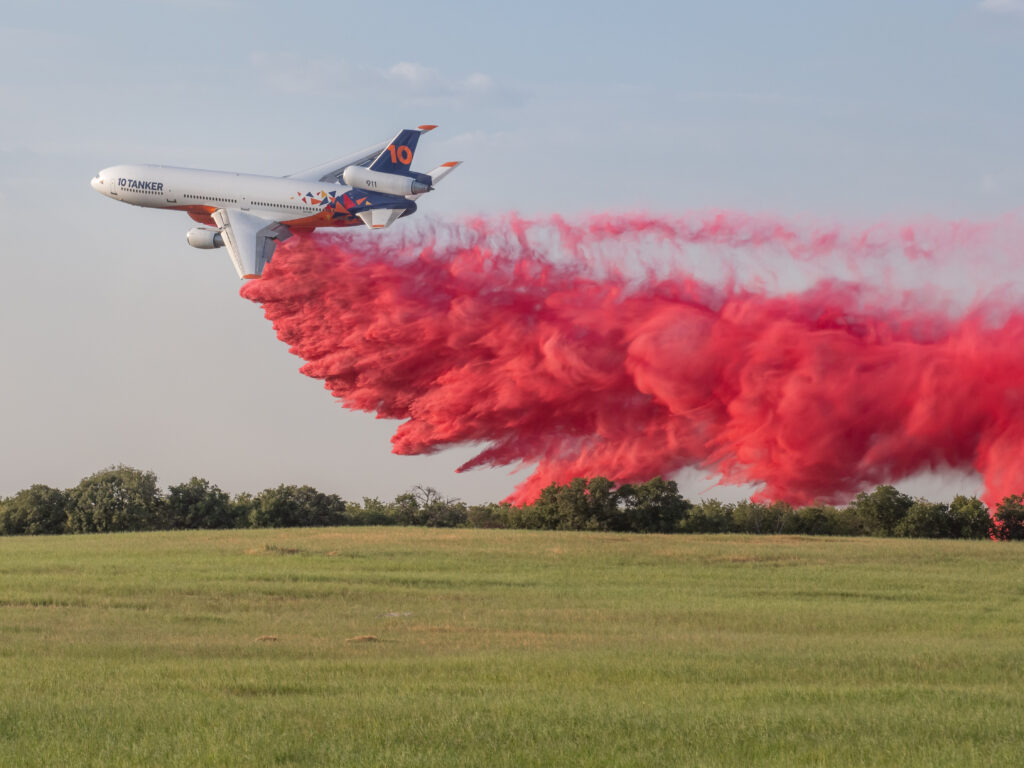Firefighting aircraft in Texas follow strict state and federal guidelines for safety, operation, training, and equipment. We obtain firefighting aircraft through a Call-When-Needed agreement with the federal government. This allows aircraft to be stationed strategically around the state during periods of critical fire weather.
WARNING: If you fly, we can’t.
Drones aren’t permitted to fly over fires simultaneously with other aircraft. Doing so puts the lives of the pilots, their crews, and aircraft at risk.
Fixed-wing program
Fixed-wing aircraft are ordered based on their capabilities, size, and classification. Some fixed-winged aircraft you might see in Texas are:
- Large Air Tankers (LATs)
- Single-Engine Airtankers (SEATs)
- Other small aircraft used for reconnaissance and air tactical supervision
- Water scoopers
- Very Large Air Tankers (VLATs)
Each of these aircraft types are essential to our state’s aerial firefighting operations.
Capabilities
VLAT’s
- Can carry over 8,000 gallons of retardant
- Largest aircraft used in aerial firefighting today
LAT’s
- Can carry 2,000-4,000 gallons of retardant
- Smaller than VLAT’s
SEAT’s
- Can carry up to 800 gallons of retardant or water
- The smallest airtanker

Rotor-wing program
Rotor-wing aircraft or helicopters are ordered based on fire weather or specific missions.
Helicopters are used for
- Cargo sling loads
- Water or retardant drops using buckets or a fixed tank
- Medical evacuations
- Reconnaissance
- Crew shuttles
Types of firefighting helicopters
Type 1 helicopters
- Largest and carries the most water or retardant
- Can carry around 700 gallons
Type 2 helicopters
- Smaller and more agile than a Type 1
- Can carry around 300 gallons
Type 3 helicopters
- Can carry around 180 gallons

We partner with Texas Parks and Wildlife, the Texas Army National Guard, and Travis County Shock Trauma Air Rescue (STAR) Flight to provide additional aviation resources to support wildland firefighting efforts. Ranch helicopters are also a key resource in supporting the suppression of wildland fires in their local regions.
Unmanned aircraft systems program
Unmanned Aircraft Systems (UAS), also known as drones, are also used to fight wildfires in Texas.
Drones are used to
- Detect hot spots
- Gather data
- Gain situational awareness
- Map wildfires
- Monitor wildfires

We require all UAS Pilots to be Part 107 certified through the Federal Aviation Administration (FAA). Pilots must stay current on their training and certifications to maintain safe operations.
